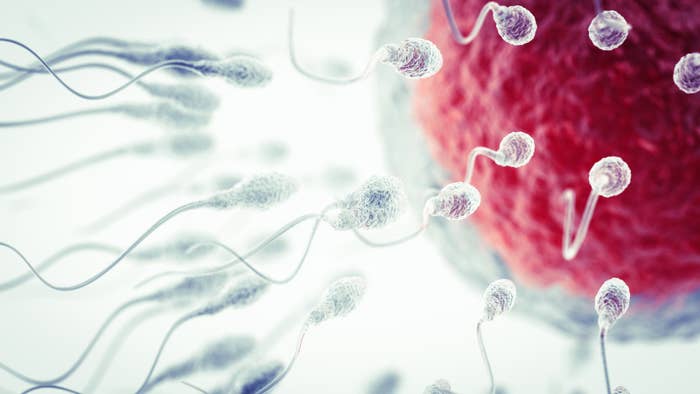
Air pollution has been linked to abnormal sperm shape in new research published today.
"Although the effect estimates are small and the significance might be negligible in a clinical setting, this is an important public health challenge," the researchers write. They call for global strategies to tackle air pollution and its potential effect on reproductive health.
Scientists who weren't involved with the research told BuzzFeed News that sperm shape does not necessarily impact on fertility, so while the result is scientifically interesting, on its own it shouldn't worry individuals.
"This is yet another study showing how bad our polluted world is for men’s health," Sheena Lewis, emeritus professor of reproductive health at Queen’s University Belfast told BuzzFeed News. But, she added, sperm shape does not necessarily give a good indication of a man's fertility.
“Many doctors and scientists now believe that on its own poor sperm morphology is probably not as clinically relevant as we once thought it was,” Allan Pacey, professor of andrology at the University of Sheffield, told BuzzFeed News. “So, whilst the authors have found a potentially interesting biological result, I am not sure it is that clinically meaningful.”
"Morphology is an important parameter of semen quality," Xiang Qian Lao, assistant professor at the Chinese University of Hong Kong and an author on the paper, told BuzzFeed News. "It could be negligible for an individual person. But from public health perspective, it is important."
Lao said that the team decided to look into the issue because air pollution is the world’s largest single environmental health risk, but there is limited information on air pollution and sperm quality.
The study, published in the journal Occupational & Environmental Medicine, involved nearly 6,500 men in Taiwan aged between 15 and 49, who took part in medical exams between 2001 and 2014. Lao and his colleagues looked at the men’s sperm counts, as well as how the sperm moved and their shape and size, using standards set out by the World Health Organisation (WHO).
The researchers then cross-referenced this with air quality data, from NASA satellites, where the men lived. They focussed on a type of air pollution called PM2.5 – small particles that are 2.5 micrometres or less across. Particulate pollution is known to worsen heart and lung disease.
WHO guidelines state that concentrations of PM2.5 shouldn’t exceed 10 micrograms per cubic metre (μg/m³) annually, on average, and should never go above an average of 25 μg/m³ in each 24-hour period. Data released last month shows that average annual levels of the pollutant in London are almost double the guideline limit.
The new study found that for every increase of 5 μg/m³ in the average PM2.5 across two years, there was a drop in normal sperm shape and size of 1.29%. The study is observational, so it can’t draw conclusions about cause and effect – but the effect came up consistently using different statistical tests, even when the researchers accounted for possible confounding factors, Lao said.
"I would put it down as an interesting association that needs replication," Jonathan Grigg, a professor of paediatric respiratory and environmental medicine at Queen Mary University of London, told BuzzFeed News.
The study also found that increasing levels of PM2.5 were associated with an increase in sperm numbers of 1 million sperm per milliliter of semen.
Lao says that this increase isn't consistent with what's been seen in other studies, but that it might be down to the body compensating for the effects on shape and size of sperm.
"We do not know the exact reasons," he said. "So we speculated it is potentially due to the compensatory mechanism, because our body has compensatory function and many previous studies show an injury may result in compensatory reaction."
But others aren’t convinced: "I don't see the scientific evidence for that in the paper," said Lewis. She added that the average fertile man probably has 150–200 million sperm per milliliter of semen, so a drop of 1 million would not be anything to worry about for an individual.
However, she says that men’s sperm are a good indicator of their overall health, so the new research does point to "quite an important public health issue".
"A 1% decrease in your sperm morphology is not going to make the difference between you being fertile or infertile," said Lewis. "But if you look at the overall picture of what this might be showing us, if we just take the sperm as a model of male health, you might be thinking this is something we really ought to look at."
Pacey agreed that air pollution was potentially a worry for reproductive health. “From this and other studies, I remain of the opinion that air pollution probably does have the potential to negatively influence male reproductive health," he said.
